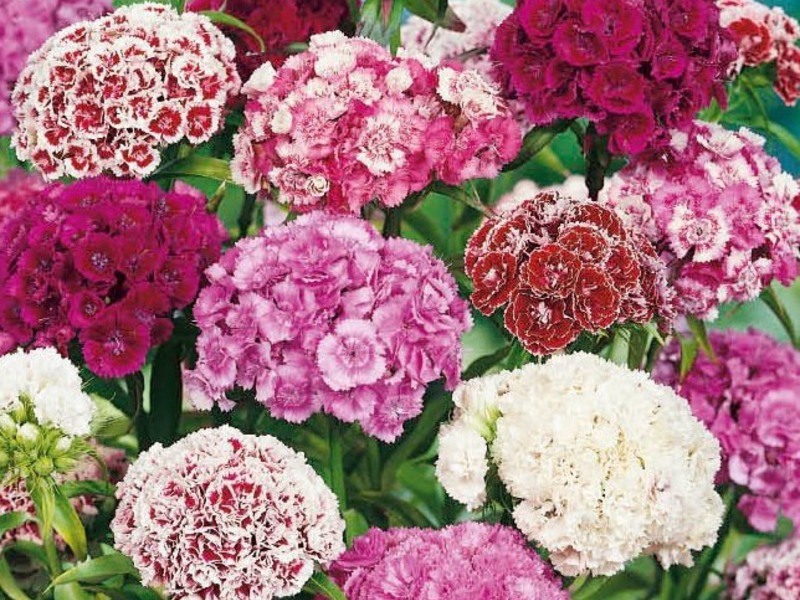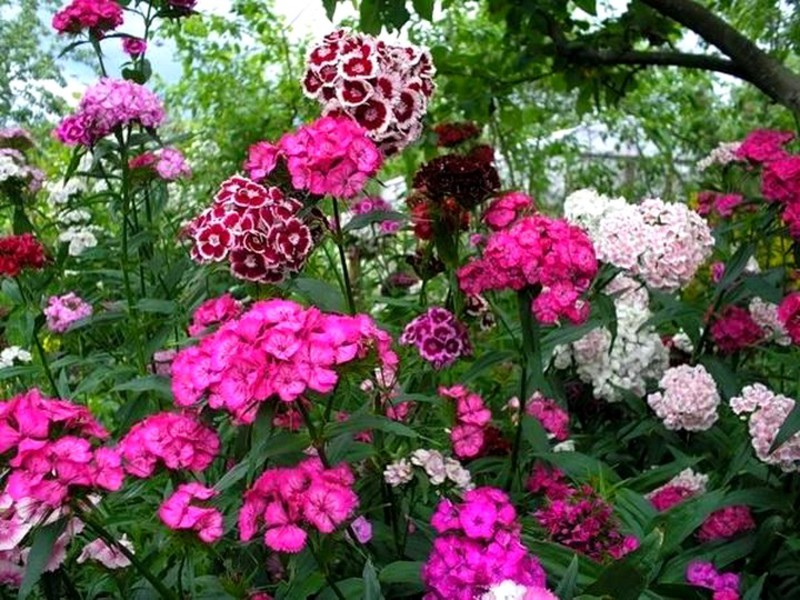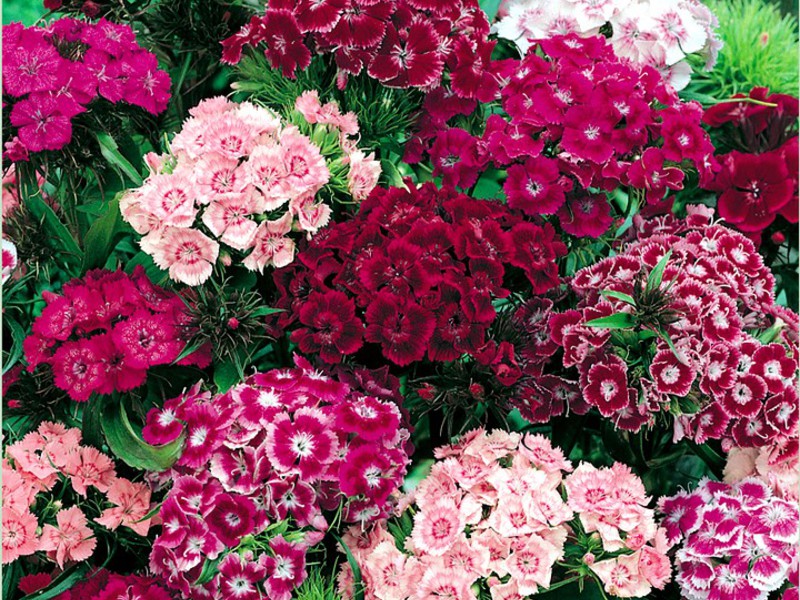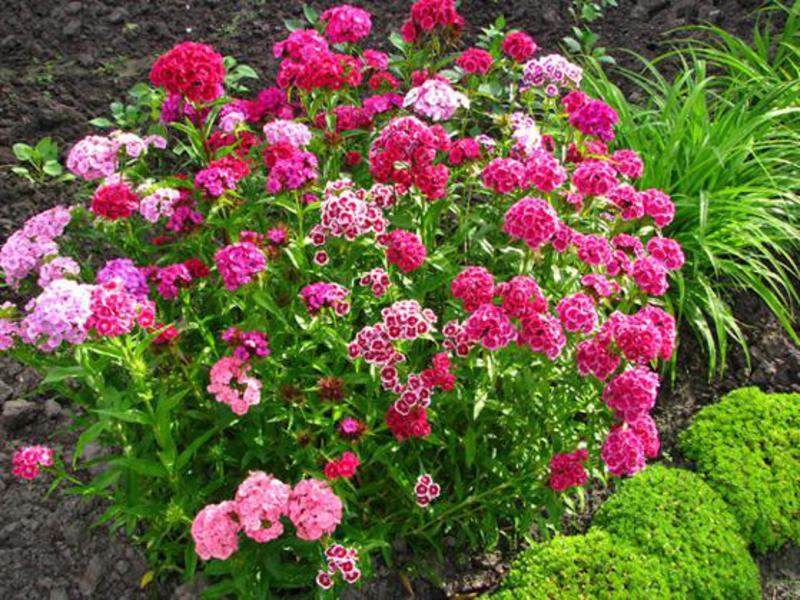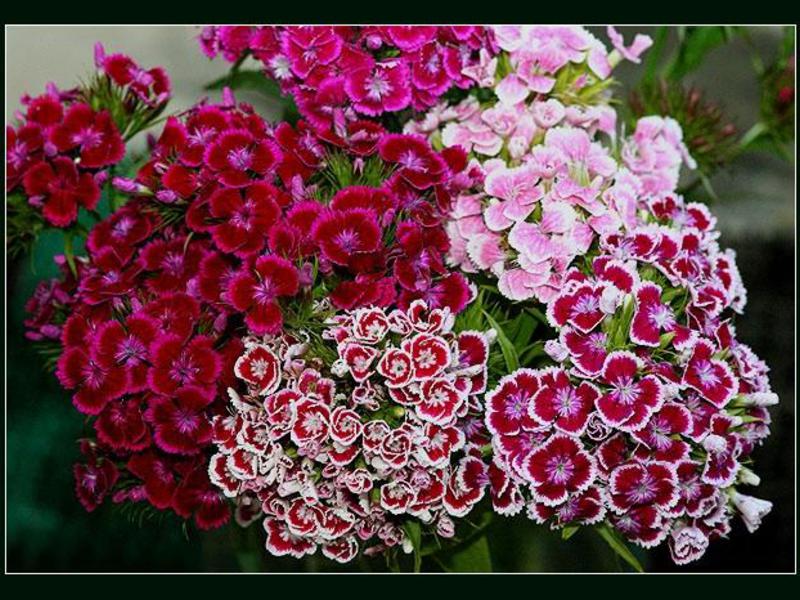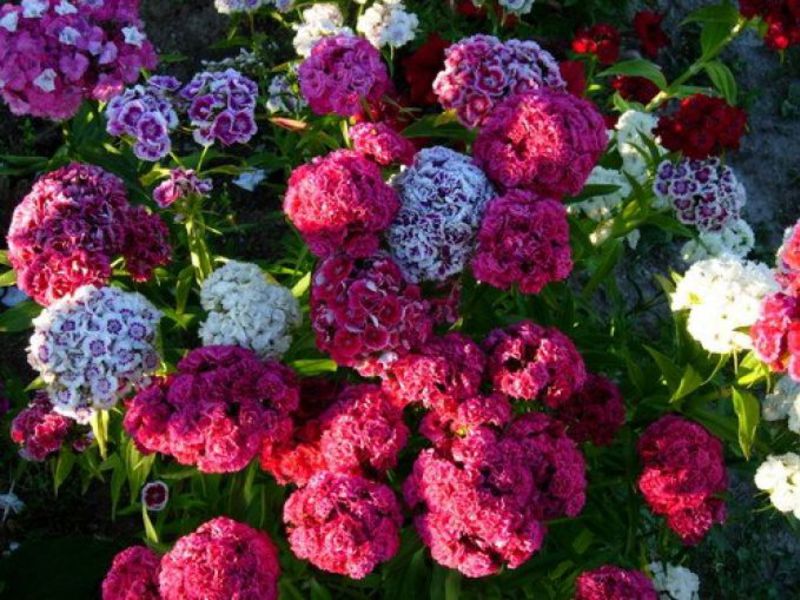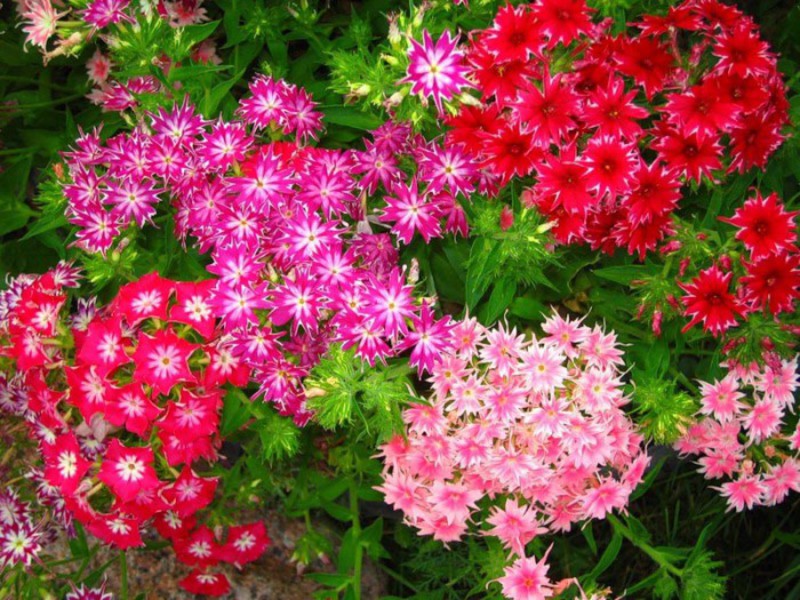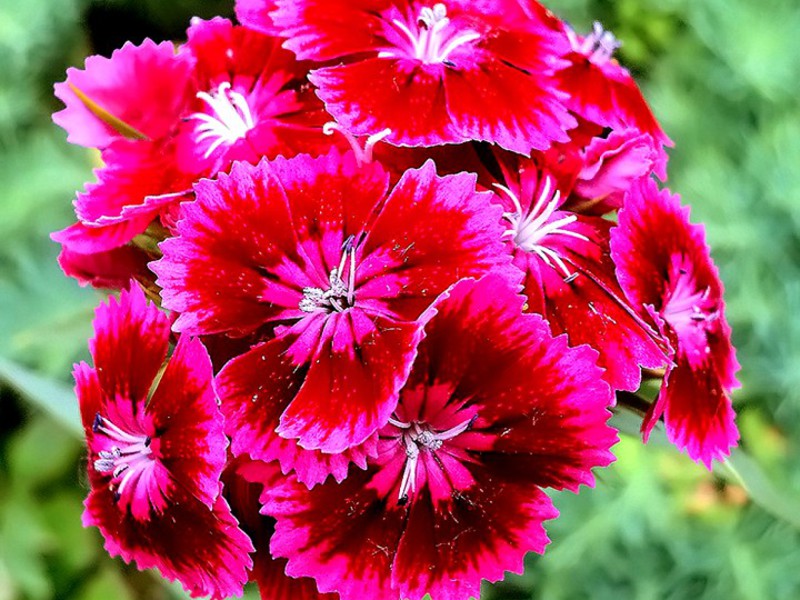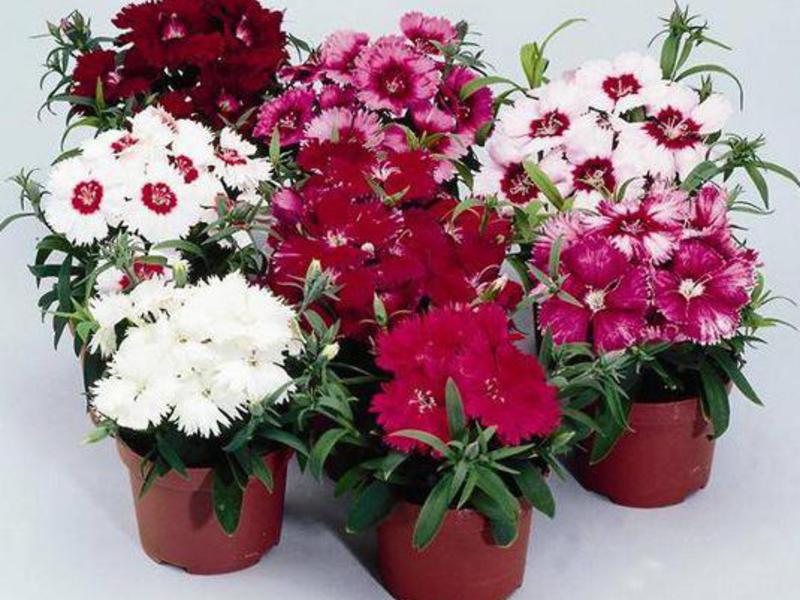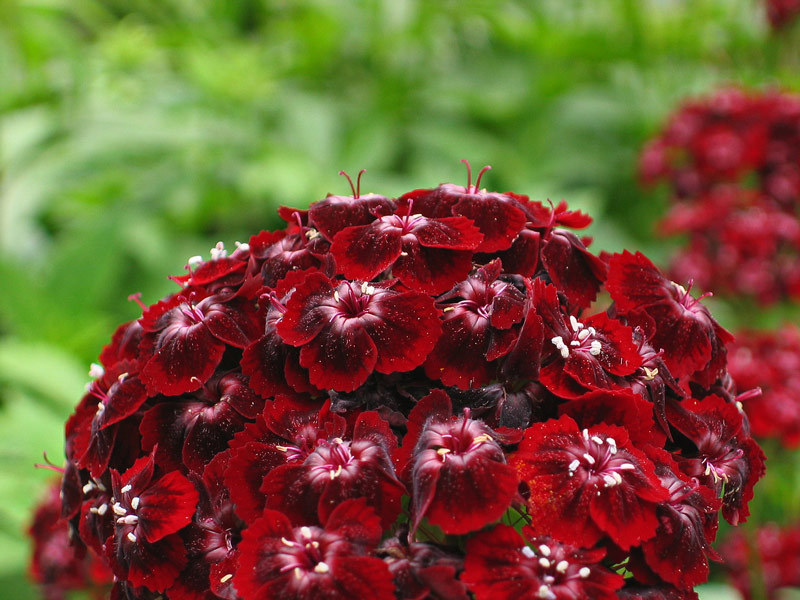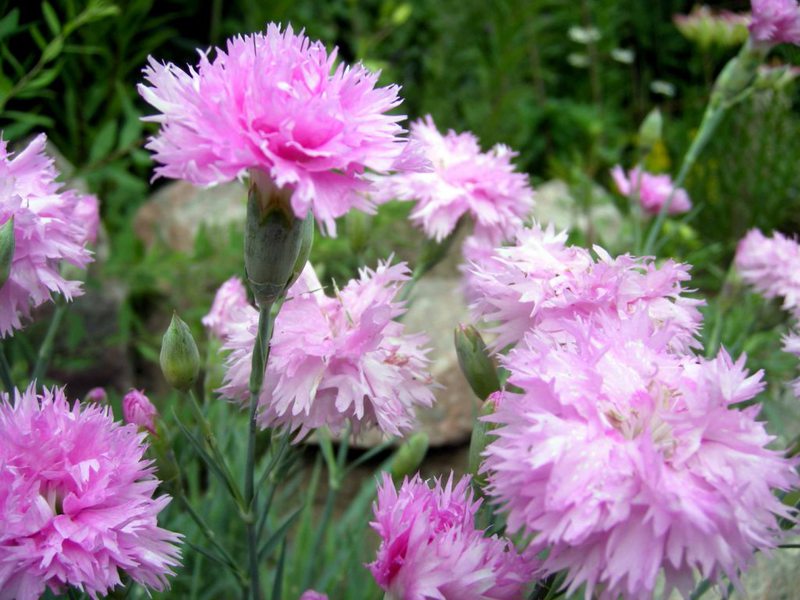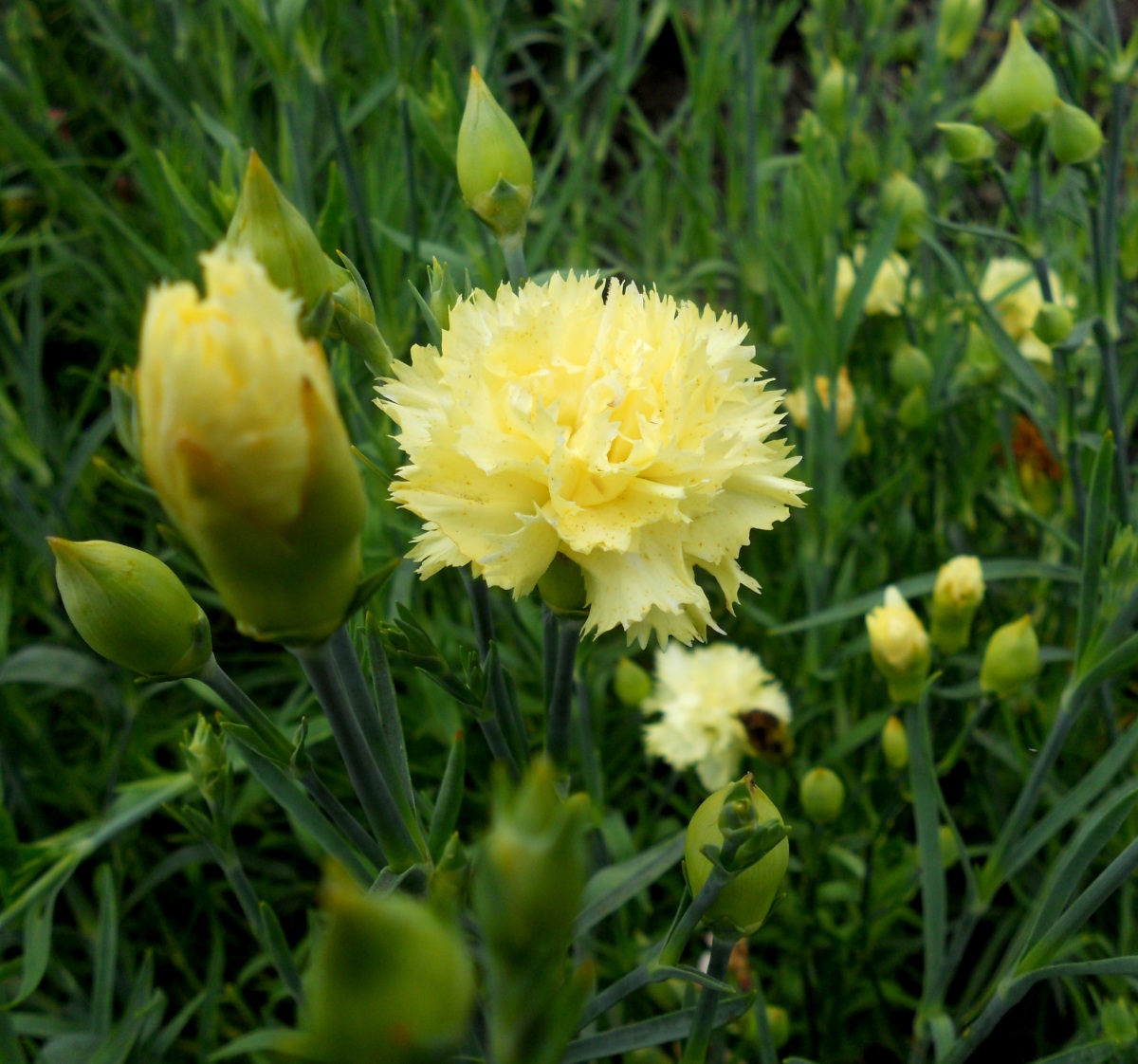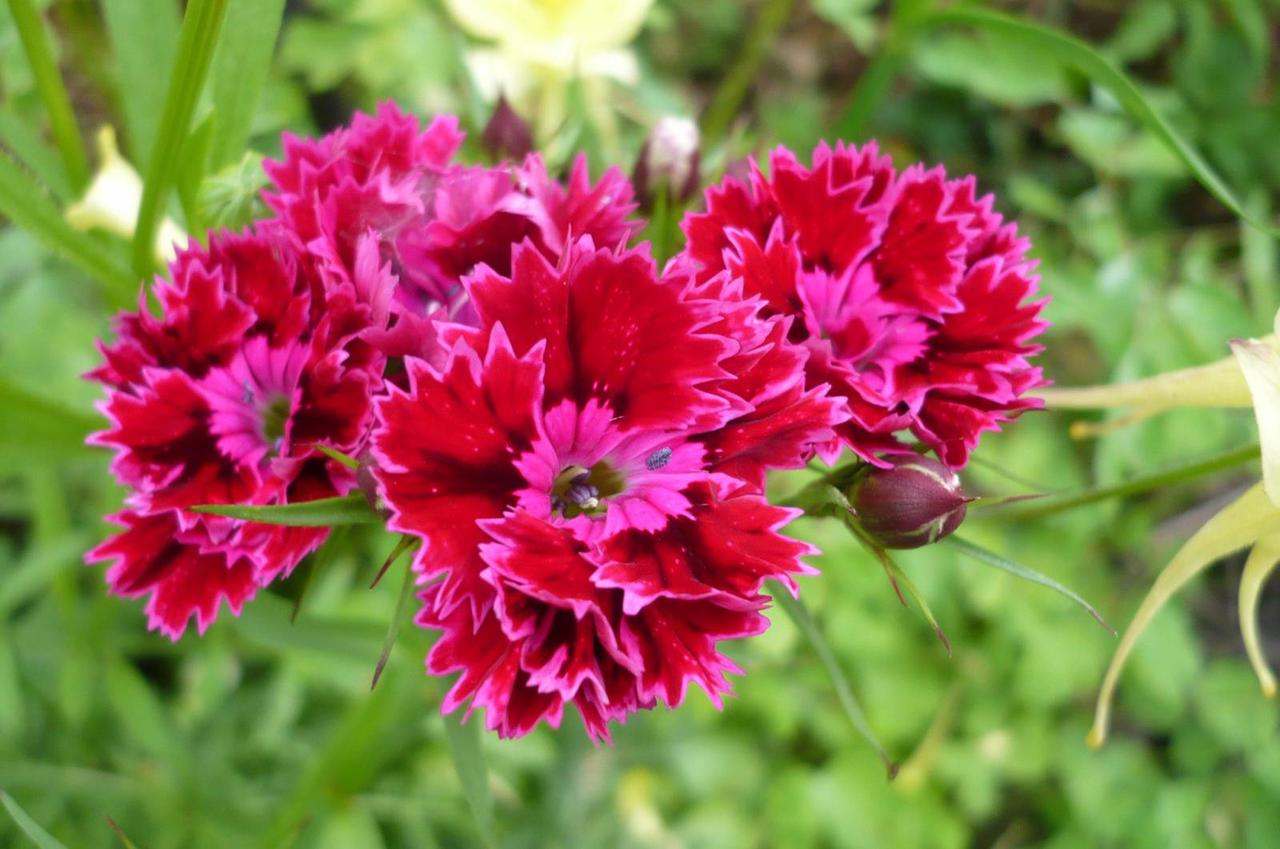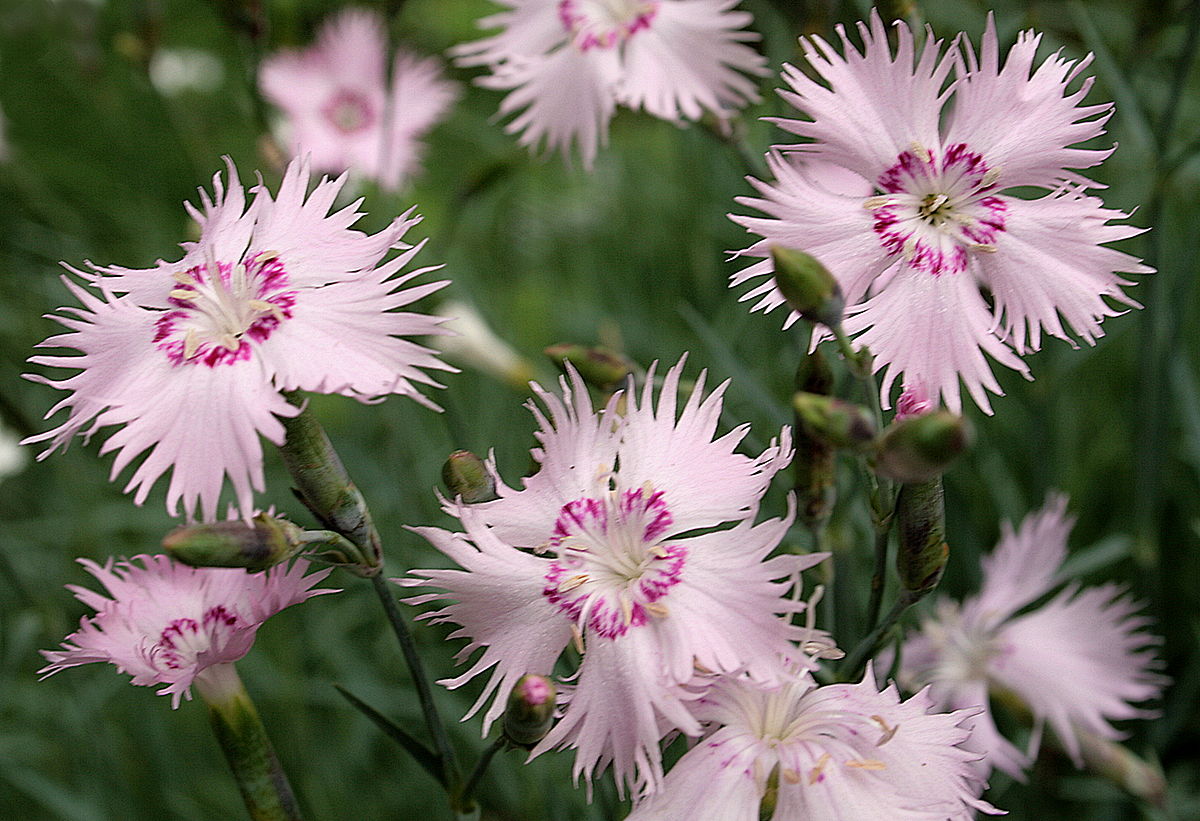For many centuries, carnation has been highly popular with flower growers in various countries. It attracts not only a beautiful appearance, but also a smell: during flowering, an aroma emanates from the culture, reminiscent of the one that is thinned by the clove buds, which are used in cooking as a spice. This explains the name of this plant.
The origin of the name of the carnation seems to be quite interesting: in translation from Greek it means "Divine flower" or "flower of Zeus". Therefore, the desire of many flower lovers to plant a carnation in their flower garden is quite understandable. However, the success of this event largely depends on the grower's awareness of the rules for growing, care and reproduction of this crop in the open field.
Content
Description of Turkish carnation
This plant can often be seen in flower beds. It was able to attract attention back in the 16th century, when it attracted the interest of flower growers with its bright flowering hats. To date, many varieties of carnation have been bred, which has a rich color range.
If desired, you can find solid white and different shades of red hybrids... Many sophisticated flower growers grow two- and three-color plants, the petals of which are decorated with original patterns. Moreover, this feature gives them a special appeal and originality, because such patterns can be very diverse, looking in the form of a border, a peephole and intricate shapes. Carnation petals look no less original. In stores, you can buy varieties with five petals, as well as hybrids with double flowers. The first carnation flowers bloom in the first weeks of summer and delight you for a month.
Planting a carnation
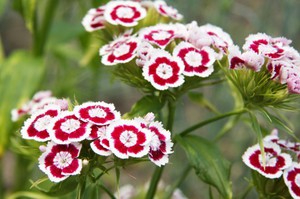 To achieve the most beautiful flowering of Turkish carnations, it is necessary to choose the right planting site, where fertile soil should prevail... Well-lit areas are a good place to grow, although it is not a mistake to plant it in partial shade. In the absence of other options, Turkish carnations can be grown on sandy loam and loamy soils, but first you have to fertilize them. The soil is fertilized just before planting using compost or humus, ash, mineral fertilizers.
To achieve the most beautiful flowering of Turkish carnations, it is necessary to choose the right planting site, where fertile soil should prevail... Well-lit areas are a good place to grow, although it is not a mistake to plant it in partial shade. In the absence of other options, Turkish carnations can be grown on sandy loam and loamy soils, but first you have to fertilize them. The soil is fertilized just before planting using compost or humus, ash, mineral fertilizers.
During the digging of a site for planting a Turkish carnation, it is enough to penetrate 25-30 cm deep. After that, the bed must be leveled and watered, if necessary. Then a thick cloth is laid over the bed and left in this state for two weeks. Then you can start planting flowers.
Sowing the seeds of a Turkish clove is necessary into furrows up to 1.5 cm deep... Furrows should be made no closer than 15 cm from each other. After sowing, the furrows should be watered and sprinkled on top with a layer of soil. Further, the earth needs to be lightly tamped.Additional watering is not required, you can limit yourself to a shelter made of dense fabric, which is kept until the first shoots appear.
You can sow carnation seeds in spring or autumn. Moreover, in each case, the sowing of seeds is carried out according to the same scheme.
Turkish carnation care
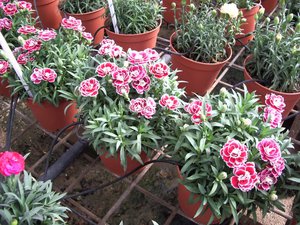 We remind you once again that it is recommended to grow cloves in well-lit areas where there is fertile soil. However, this plant can easily die from the winter cold. First of all, it is dangerous for young plants. In addition, a serious danger to the Turkish carnation is waterlogging and stagnant water.
We remind you once again that it is recommended to grow cloves in well-lit areas where there is fertile soil. However, this plant can easily die from the winter cold. First of all, it is dangerous for young plants. In addition, a serious danger to the Turkish carnation is waterlogging and stagnant water.
Plants experience the greatest stress in early spring, since temperature fluctuations are often observed at this time of the year, since during the daytime the temperature can reach summer marks, and at night there are often frosts. To protect the carnation during this period, it is necessary to use spruce branches. The need for it disappears at the moment when the last wave of frost has passed.
At the end of flowering, it is necessary to trim the stems and fertilize the soil. Such events launch the formation of new shoots, which will allow wait for secondary flowering cloves, however, this only happens in certain varieties. If you follow the rules for growing Turkish carnations exactly, then it will be able to delight with its bright buds for 6 years. Neglect of the rules of care can lead to the fact that after three years, and perhaps even earlier, you will have to look for a replacement for her.
So that the plant does not experience the need for moisture, watering should be carried out at least 1-2 times a week. In dry years, the amount of watering is increased. It is necessary to water the carnation on the ground, avoiding droplets of water falling on the flower. Otherwise it will result in burns.
Fertilizing and feeding Turkish cloves
Growing from Turkish carnation seeds involves regular feeding.
- for the first time, fertilizers are applied at the moment when the plant reaches a height of 10 cm. For these purposes, a special solution is used, for the preparation of which it is necessary to dilute 1 tbsp in 10 liters of warm water. l. nitrophoska and 1 tbsp. l. Agricola Forward;
- in the bud formation phase, a second feeding is carried out. A solution is used as a fertilizer, for the preparation of which it is necessary to dilute 1 tbsp in 10 liters of water. l. potassium sulfate and the same amount of superphosphate;
- for the third time, fertilizers are applied at the stage of carnation flowering. For this, the following solution is prepared: you need to take 1 tbsp. l. fertilize Agricola for flowering plants and dilute in 10 liters of water.
Plant propagation
The main breeding methods of this perennial plant are sowing seeds and using cuttings... In the latter case, it is possible to successfully complete the event, provided that a certain order of actions is precisely followed:
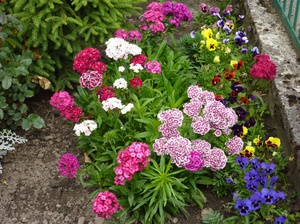 in July or August, suitable shoots are chosen and bent to the ground, after which they are fixed from above, sprinkled with earth, forming a mound;
in July or August, suitable shoots are chosen and bent to the ground, after which they are fixed from above, sprinkled with earth, forming a mound;- a peg is driven in next to the stem, to which the shoot is tied so that it does not change its vertical position;
- after two to three weeks, new shoots will begin to form, which need to be cared for;
- by autumn, the new shoots will become strong enough and can be transplanted to a permanent place.
You can get new bushes of Turkish carnations by cuttings... To do this, choose shoots on which inflorescences did not have time to form in the current season.
You can also plant bushes that have grown in the open field as a result of self-seeding. In this case, you will not have to hold special events, since it will be enough to choose a suitable place. But it must be borne in mind that self-sown carnation seedlings usually do not retain the properties of the parent plant.
Diseases and pests of Turkish carnation
They want Turkish carnation and have such a useful quality as disease resistance, some varieties can be affected by diseases spread by sucking insects. This risk is highest in the southern regions where this plant is grown. The first signs of infection of this perennial plant are slow growth, the presence of a mosaic color on the leaves, as well as their subsequent deformation... They fight these diseases by completely destroying the infected bushes, which must be done to avoid spreading the disease to neighboring bushes.
Heterosporia
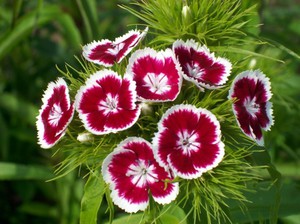 Certain types of garden carnations can also be affected by heterosporiosis. Fungi cause this disease, as a result, small gray spots can be seen on the leaves and stems. In some cases, a red border may be present. Gradually, the spots acquire a lighter color, begin to merge.
Certain types of garden carnations can also be affected by heterosporiosis. Fungi cause this disease, as a result, small gray spots can be seen on the leaves and stems. In some cases, a red border may be present. Gradually, the spots acquire a lighter color, begin to merge.
Where accumulations of spots are formed, the flowers begin to thin out, over time the leaves turn yellow and die off. Given the high vitality of the fungus, even after the complete death of the plant, it is necessary to remove all residues, then spray the neighboring bushes with Bordeaux liquid or copper chloride.
Spider mites and aphids
When growing a garden carnation from seed outdoors, it can be attacked by pests such as spider mites and aphids.
Among the available funds, it has proven itself well tincture of potato tops.
- to prepare it, you will need 1 kg of potato tops, which must be poured with 10 liters of water;
- then the mixture is infused for 1.5 days;
- before direct use, add one tablespoon of liquid soap to the tincture.
Carnation combined with other plants
When growing carnations in flower beds, you can add other ornamental plants to it. However, it is best to choose sun-loving perennials as neighbors. Turkish carnation will feel good together with Alpine aster, Carpathian bell and rudbeckia. What these perennials have in common is that they have the same soil requirements, watering and lighting.
Conclusion
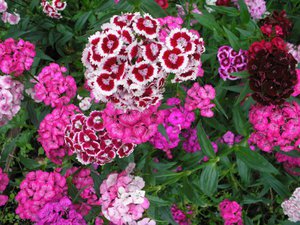 Growing a carnation is not a problem, because in recent years, specialists have been able to accumulate a lot of knowledge about the features of its cultivation and care in the open field. And, despite the fact that it does not cause much trouble for the gardener, you still need to take into account certain rules and follow them. First of all, you need to prepare a suitable place for planting, because the carnation grows well only on fertile soil.
Growing a carnation is not a problem, because in recent years, specialists have been able to accumulate a lot of knowledge about the features of its cultivation and care in the open field. And, despite the fact that it does not cause much trouble for the gardener, you still need to take into account certain rules and follow them. First of all, you need to prepare a suitable place for planting, because the carnation grows well only on fertile soil.
Place for carnation should be well lit, and after planting it is necessary to provide it with regular watering. In the process of growth, you need to constantly monitor the condition of the carnation, because at the most unexpected moment it can be attacked by pests. Therefore, it is important here to quickly notice changes and immediately begin to carry out the necessary measures.
